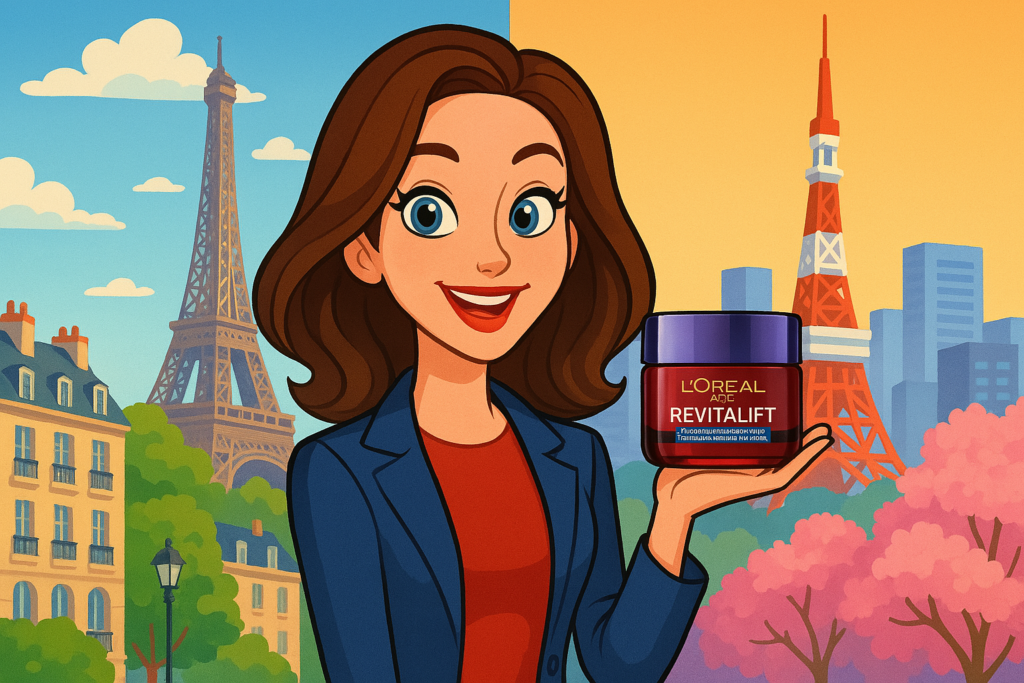
I read a story yesterday that reinforced a few important things I’ve been saying about AI in real-world projects.
L’Oreal is using Google‘s AI to slash content creation time from weeks to days.
It’s kind of a huge step within the industry, despite all the amateur experiments and startling mock-ups we’ve seen from elsewhere.
And L’Oreal is doing things differently from what you’ve probably seen with “digital twins” or “clones” by companies like H&M.
The French beauty giant is running AI-powered image generation through its CREAITECH lab, turning marketing ideas into visuals with simple text prompts.
It’s not fancy tech for tech’s sake. Or job-stealing human replacement (at least not at its heart).
It’s solving a massive, expensive problem every global brand faces: localization.
Imagine a shampoo photoshoot in Europe, like L’Oreal has done all the time since 1909. Traditionally, you’d need separate shoots for each major market – Paris, Tokyo, New York.
Not anymore. Now L’Oreal takes that same product shot and drops it into a Japanese garden or Parisian street with a few keystrokes.
The copy changes, the setting changes, but the product stays consistent.
What’s even more interesting is their approach to guardrails. L’Oreal WON’T generate AI faces, bodies, hair, or skin for ads.
Smart move.
(For now, say cynics like me.)
This focus on non-human elements keeps them safely away from the ethical quicksand while still capturing 80% of the benefits.
Here’s what this means for you, even if you’re not a billion-dollar beauty conglomerate:
The content bottleneck is cracking wide open.
Visual asset creation has always been the slow, expensive part of marketing. The approvals, the shoots, the edits, the revisions…
That timeline is collapsing.
(You should have seen it in the days of film cameras, say grizzled veterans like me.)
In I Need That, I talk about how products have to continually adapt to evolving customer expectations. The companies that can test more concepts faster have an overwhelming advantage.
The nimble experimenter beats the perfectionist every time.
Think about what you could do with 10X more high-quality visual concepts in the same timeframe.
You could test more ideas.
You could personalize for more segments.
You could respond faster to market shifts.
Product Payoff: My daughter’s favourite design app Canva recognized this opportunity early, integrating AI image generation directly into its platform. Unlike competitors focusing on pro designers, Canva targeted marketing teams who needed quality visuals without specialized skills. This democratization approach has been pretty effective — Canva has grown to 170 million monthly users and a $49 billion valuation. Canva understood that for most companies, “good enough, right now” beats “perfect … eventually” every single time.
Action for today: Identify ONE visual content bottleneck in your marketing process. Where do you wait the longest for images or videos? Run a small experiment using available AI tools to generate concept visuals for your next campaign. You don’t need to replace your production process yet — just parallel-track it to compare speed, cost, and quality. Document what works and what doesn’t.
AI is super-dynamic, and what you couldn’t do two months ago (as in before GPT 4.o) you may be able to do now!
Have you started experimenting with AI for marketing content creation?
What’s working — and what sucks? Tap that reply arrow and share your experience. I’m itching to know what you think and what you’re finding.
And you know I ALWAYS write back.
Or reach out to my amazing team of product marketing specialists at Graphos Product.
